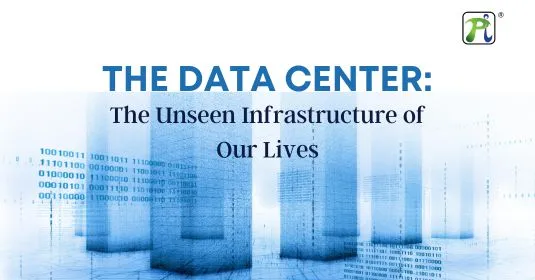We Will Get Back To You As Soon As Possible


In this era of tech-driven advancements, data centers are the silent champions that power our digital world. Storing vast amounts of information is vital for most contemporary companies' proper functioning; hence, modern businesses depend heavily on state-of-the-art facilities like these. Data centers play a crucial role in our rapidly evolving technological landscape, and we'll explore what makes them so significant as well as how they're shaping the future of tech in this article.
Data center facilities hold computing infrastructures such as computer systems and components like servers, Cooling Units, Battery Rooms, Power infrastructure Networking, Storage, Cabling infrastructure, and more. It acts as an environment that maintains the security of critical organizational data and manages its appropriate storage.
The meticulous design of data centers ensures they operate with optimal performance and reliability, and the critical component includes various vital elements and foundational infrastructure such as:
Servers are hardware or software that provide the functionality to a data center. They are connected to networks to make data accessible to computers. Servers are typically housed in server racks.
Networking equipment enables the storage and processing of applications and data through switching, routing, load balancing, analytics, and more.
Data center storage consists of technologies, software, and devices that store data and applications within a data center.
Software is the non-physical component of a computer system that comprises the programs, procedures, and routines involved in efficiently operating a computer system.
The foundation of data centers lies within the cabling infrastructure, which enables the power and data transmissions critical to operations. Failure to properly manage these systems can lead to serious issues, such as downtime and significant expenses.
The foundation of data centers lies within the cabling infrastructure, which enables the power and data transmissions critical to operations. Failure to properly manage these systems can lead to serious issues, such as downtime and significant expenses.
Physical infrastructure such as rack PDUs, remote power panels, busways, floor PDUs, and UPSs are necessary to provide power to IT equipment. A fuel generator usually supplies backup power to minimize downtime.
Computer Room Air Conditioning (CRAC) and Computer Room Air Handler (CRAH) units are types of cooling equipment used in data centers to maintain an optimal temperature and prevent critical IT equipment from overheating.
Data centers may include alarms, electronic door locks, biometric scanners, and other safety measures to protect the data and assets.

At data centers, stringent security systems & policies are in place to protect sensitive data, including physical access controls and surveillance systems, fire suppression mechanisms, and encryption protocols.
As technology continues to advance, data centers are evolving to meet growing demands and incorporate cutting-edge innovations:
With the rise of Internet of Things (IoT) devices and real-time applications, data centers are shifting closer to the network edge to minimize latency and improve responsiveness.
Energy efficiency and environmental sustainability are becoming key considerations for data centers, leading to the adoption of renewable energy sources and more efficient cooling systems.
AI and machine learning are being integrated into data centers to optimize operations, predict equipment failures, and enhance energy efficiency.
Many organizations are adopting hybrid and multi-cloud strategies, combining private and public cloud infrastructure with on-premises data centers to achieve the best of both worlds.
Data centers are crucial to our digital infrastructure as they act as the backbone for storing, processing, and transmitting massive amounts of data that power our modern world. Their significance cannot be overstated, as they support critical business operations, facilitate communication networks, and empower emerging technologies. As technology advances, data centers will undoubtedly play an increasingly crucial role in shaping our digital future.
Questions? We're here to help.
©2025 Pi DATACENTERS® Pvt. Ltd. All rights reserved
